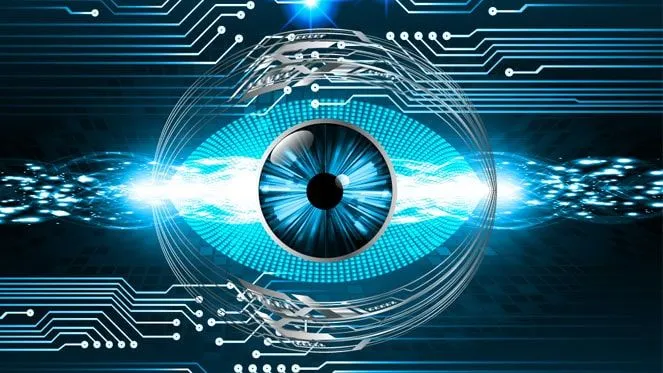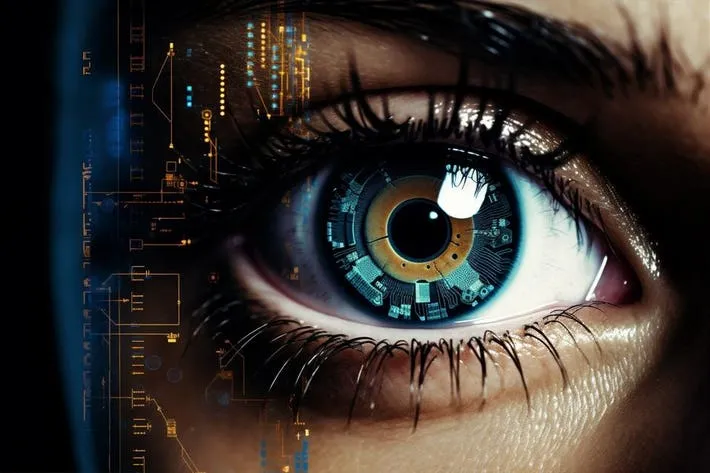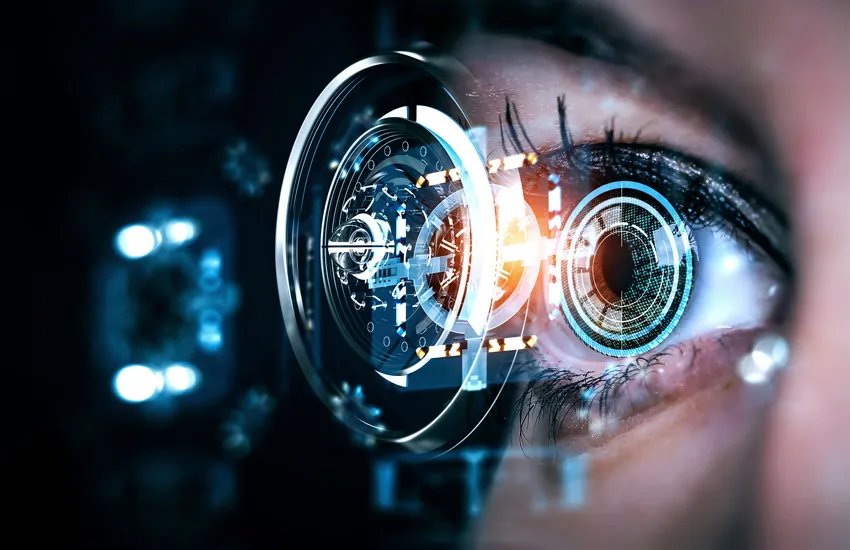Before I discuss the Computer Vision Roadmap, let’s see the Skills Required for Computer Vision–
The scope of computer vision (C.V.) is growing rapidly. According to a report, the market for computer vision is expected to increase significantly. Specifically, it is projected to rise from US$10.9 billion in 2019 to US$17.4 billion by 2024, demonstrating a growing compound annual growth rate (CAGR) of 7.8%.
So, to learn Computer Vision, you should have the following skills-
- Maths Skills.
- Programming Skills.
- OpenCV Library
- Deep Learning Frameworks
- Convolutional neural networks (CNN)
- Recurrent neural networks (RNN)
- Now, let’s move to the step-by-step Computer Vision Roadmap–

Step 1- Brush-Up Your Math skills and Computer Vision
The first step or skill in computer vision (C.V.) is mathematical skills. Consequently, it helps you understand how computer vision algorithms work.
Moreover, in daily use, computer vision algorithms depend on parameters and variables.
Therefore, without any understanding of the underlying math, programming easily ends up guessing values.
In mathematics, you need to learn the following subjects
- Probability & Statistics.
- Linear Algebra.
- Calculus.
Now, let’s see the resources to learn math and statistics-
-Resources for Learning Statistics & Maths-
- Intro to Statistics– Udacity FREE Course
- Linear Algebra Refresher Course– Udacity FREE Course
- Basic Statistics (Online Course)
- Statistics and probability
- Practical Statistics for Data Scientists (TextBook)
- Data Science: Statistics and Machine Learning Specialization (Online Course)
- Statistics for Data Science (YouTube Video)
- Mathematics for Data Science Specialization (Online Course)
Step 2- Learn The Programming Language of Computer Vision
Good programming skills are a way to become an expert in computer vision. The result of this is that there are many languages among which you can choose to use anyone. Moreover, the most used languages in computer vision are Python, C++, and Java. Hence, working on these will greatly benefit your career in computer vision.
- Python.
- R.
- C.
- Java.
But, Python and R are the most suitable programming language for Computer and Deep Learning. I would suggest you learn Python or R.
So, if you are a beginner, I will recommend you, learn Python
Now, let’s see the resources to learn Python and R.
-Resources for Learning Python Programming-
- Introduction to Python Programming(Udacity Free Course)
- The Python Tutorial (PYTHON.ORG)
- CS DOJO (YouTube)
- Python 3 Tutorial (SOLOLEARN)
- Python For Data Science(Udemy Free Course)
- Programming with Mosh (YouTube)
- Corey Schafer (YouTube)
I am also going to list some free resources to learn R Programming. So, If you want to learn R, you can learn from these Free Resources-
-Free Resources to Learn R-
- R Basics – R Programming Language Introduction(Udemy Free Course)
- R Programming (Coursera Free to Audit Course)
- Learn R Quickly (Udemy Free Course)
- R, ggplot, and Simple Linear Regression (Udemy Free Course)
- Programming R Tutorial (YouTube Tutorial)
- R Programming Full Course In 7 Hours (YouTube Tutorial)
Step 3- Learn The OpenCV Library of Computer Vision
OpenCV is a library in PC Vision that holds a few capabilities to perform procedures on pictures or recordings.
This library was initially evolved by Intel however was subsequently kept up with by Willow Carport and presently it is kept up with by Itseez. This library is cross-stage which is all there is to it and is accessible in various programming dialects like Python, C++, and so on.
You need to be well-versed in the OpenCV library.
-Resources for Learning OpenCV Library-
- Introduction to C.V. and Image Processing– Coursera
- Computer Vision with OpenCV Python | Official OpenCV Course– Udemy
- Introduction to Computer Vision with Watson and OpenCV– IBM
- Python for C.V. with OpenCV and Deep Learning– Udemy
- Deep Learning and Computer Vision A-Z™: OpenCV, SSD & GANs– Udemy
- Python Project: pillow, tesseract, and OpenCV– University of Michigan
- Learning OpenCV 4 Computer Vision with Python 3– Book
- Computer Vision, Deep Learning, and OpenCV– Tutorial
- OpenCV Tutorials– Official Website
- OpenCV Course – Full Tutorial with Python– YouTube
- LEARN OPENCV in 3 HOURS with Python– YouTube
- OpenCV Python for Beginners– YouTube
Step 4- Learn Deep Learning Frameworks
You should know Deep Learning Frameworks.
The most popular framework of Deep Learning-
- TensorFlow.
- Theano.
- scikit, learn.
- PyTorch.
- Keras.
- DL4J.
- Caffe.
- Microsoft Cognitive Toolkit.
Now, let’s discuss some frameworks in detail-
a) Tensorflow-
Tensorflow is the most widely used framework in Machine Learning and Deep Learning. This is an open-source programming library. It is utilized for numerical computation utilizing an information stream diagram.
b) Theano
Theano permits you to characterize, enhance, and assess numerical articulations. Well-known libraries are LASAGNE, BLOCKS, and KERAS.
c) sci-unit learn-
It depends on top of existing libraries like NUMPY, SCIPY, and MATPLOTLIB. It started as a GOOGLE SUMMER OF CODE and now has 23,000 Github commits.
Now, let’s see the resources to learn Deep Learning Frameworks–
-Resources for Learning Deep Learning Frameworks–
- Intro to Deep Learning with PyTorch– Udacity FREE Course
- Intro to TensorFlow for Deep Learning– Udacity FREE Course
- Introduction to Deep Learning & Neural Networks with Keras– Coursera
- Advanced Deep Learning with Keras– Datacamp
- Deep Learning Fundamentals with Keras– edX
- Complete Tensorflow 2 and Keras Deep Learning Bootcamp- Udemy
- TensorFlow 2 for Deep Learning Specialization– Coursera
- Introduction to Deep Learning with PyTorch– DataCamp
- Deep Neural Networks with PyTorch– Coursera
- PyTorch: Deep Learning and Artificial Intelligence– Udemy
- Deep Learning PyTorch for with Python– Udemy
- PyTorch Tutorials– pytorch.org
Step 5- Learn Convolutional neural networks (CNN)
CNN is used to construct the majority of computer vision algorithms.
Convolutional Neural Network is an algorithm of Deep Learning. That is used for Image Recognition and Natural Language Processing. Convolutional Neural Network (CNN) takes an image to identify its features and predict it.
Yann Lecun is the father of the Convolutional Neural Network. He is a student of Geoffrey Hilton. Geoffrey Hilton is the father of Artificial Neural networks.
Steps in Convolutional Neural Network-
In Convolutional Neural Network, there are the following steps-
- Convolution Operation.
- ReLU Layer.
- Pooling.
- Flattening.
- Full Connection.
- Now, let’s see the resources to learn CNN-
-Resources for Learning CNN-
- Convolutional Neural Networks– deeplearning.ai
- Intel® Edge AI Fundamentals with OpenVINO™– Udacity FREE Course
- Advanced Computer Vision with TensorFlow– Coursera
- Introduction to Computer Vision and Image Processing– Coursera
- Become a Computer Vision Expert– Udacity
- Deep Learning and Computer Vision A-Z™: OpenCV, SSD & GANs– Udemy
- Image Understanding with TensorFlow on GCP– Google Cloud Training
Step 6- Learn Recurrent neural networks (RNN)
A Recurrent Neural Network is a network that can understand sequences and time.
Sequences are not only text or music, they can also be videos (sets of images).
It means that using RNNs and CNNs together is possible, and in fact, it could be the most advanced use of Computer Vision we have.
We can use RNN in action classification and movie generation.
So, you can learn RNN for computer vision.
-Resources for Learning RNN-
- Fundamentals of CNNs and RNNs– Coursera FREE Course
- Simple Recurrent Neural Network with Keras– Coursera Project
- Become a Computer Vision Expert– Udacity
- TensorFlow 1. x Deep Learning Cookbook– Book
- Recurrent Neural Network (RNN) Tutorial – YouTube
Step 7- Work on Projects
Once you learn all the required Computer Vision skills, start working on Computer Vision projects. The more you work on projects, the more you will learn.
I am going to discuss some beginner-level project ideas for Computer Vision. These projects will help you to sharpen your computer vision skills and boost your resume. I would suggest you pick a project from this list and start working on that project.
- People counting tool
- Colors detection
- Object tracking in a video
- Pedestrian detection
- Hand gesture recognition
- Human emotion recognition
- Road lane detection
- Business card scanner
- License plate recognition
- Handwritten digit recognition
- Iris Flowers Classification
- Family photo face detection
- LEGO Brick Finder
- PPE Detection
- Face mask detection

So that’s it; only these skills are required to become a Computer Vision Expert. Congratulations, it’s your first step toward Computer Vision.
But the most important thing is to keep enhancing your skills by working on more and more challenges.
The more you practice, the more knowledge of Computer Vision you will gain.
Now it’s time to wind up!
Conclusion
In this article, I have covered How to learn Computer Vision. In case you have any doubts or queries, do ask me in the comment section. I am here for you.
All the Best for your Career!
Happy Learning!


Курсы вокала: Развитие голосовых данных в школе вокала
уроки вокала для детей http://www.top1-shkola-vocala.ru .
Обзор цен на монтаж сантехники: как не переплатить за услуги
цена за точку сантехники http://www.santehnik-spb-cena.ru/ .
Прочные зип пакеты с бегунком: Надежная упаковка для любых нужд
купить зип пакеты с бегунком http://zip-lock-pakety.ru/ .
Лучшая наркологическая клиника в Самаре: Отзывы и рекомендации
наркологическая клиника сайт https://narkolog-klinika-samara-1.ru/ .
Казино Чемпион: Бонусы для постоянных игроков и новые акции
Чемпион казино вход Чемпион казино вход .
Вывод из запоя и поддержка трезвости – Комплексная помощь нарколога
Вывод из запоя Вывод из запоя .
ГК Пересвет: монтаж винтовых свай под ключ
Сваи Пересвет: винтовая свая цена
Ремонт иномарок всех марок и моделей – Быстро и качественно
ремонт иномарок спб ремонт иномарок спб .
Cummins 6 ISBe: Персональная скидка для каждого клиента
двигатель 6isbe http://www.cummins-6isbe-1.ru/ .
Как узнать, что пора обратиться за помощью в выводе из запоя
Снять алкогольную интоксикацию на дому vivodizzapoya.kz .
Вывод из запоя на дому: безопасно и эффективно
Вывод из запоя Алматы http://vivodizzapoyavalmaty.kz/ .
Комплексное лечение зависимости в наркологическом центре Алматы
Лечение алкоголизма Алматы http://vivodizzapoyanadomu.kz/ .
Профессиональная доставка грузов из Китая в Казахстан — Оптимальные маршруты и сроки
доставка груза в казахстан из китая perevozki-kitai-kazahstan.ru .
Магазин элитных шуб в Москве: Воплотите свои мечты о роскоши и элегантности
furs шубы https://shuby-premium.ru .
УФ печать: высокое качество и долговечность изображений для вашего бизнеса
уф печать на пэт https://www.shirokoformatnaya-uf-pechat.ru/ .
Оперативная УФ печать на дереве: Быстрая доставка и гарантия качества
уф печать на дереве pechat-derevo.ru .
Преимущества современных пансионатов для пожилых людей: забота и комфорт на высшем уровне
пансионаты для пожилых в москве https://pansionaty-dlya-pozhilyh2.ru/ .
Почему дом престарелых – это безопасное и удобное решение для пожилых людей
дом престарелых в москве https://doma-prestarelyh2.ru/ .
Как чистка лимфы солодкой и полисорбом помогает укрепить иммунитет
полезные статьи о здоровье и медицине http://clinika-moscow.ru/ .
Почему шубы из баргузинского соболя считаются эталоном качества и стиля
шуба соболь москва https://www.shuby-sobol.ru/ .
Зимние подарочные наборы для корпоративных подарков: идеи и советы
Подарочные наборы для водки https://www.gift31.ru/ .
Срочное вскрытие дверей в Санкт-Петербурге без повреждений
вскрытие сейфов спб https://www.zamkidoloi.ru .
Biohacker Host: как ноотропы помогают улучшить настроение и стрессоустойчивость
Биохакер: магазин ноотропов купить
Винтовая свая 57 мм: как выбрать поставщика и на что обратить внимание
оголовок для сваи 57 мм купить оголовок для сваи 57 мм купить .
Продвижение сайтов в Google: стратегии для быстрого результата
услуги продвижения сайта https://prodvizheniesajtov1.ru/ .
Ортопедические матрасы: ключ к здоровому позвоночнику
ортопедический матрас односпальный http://www.ortopedicheskij-matras-moskva-1.ru/ .